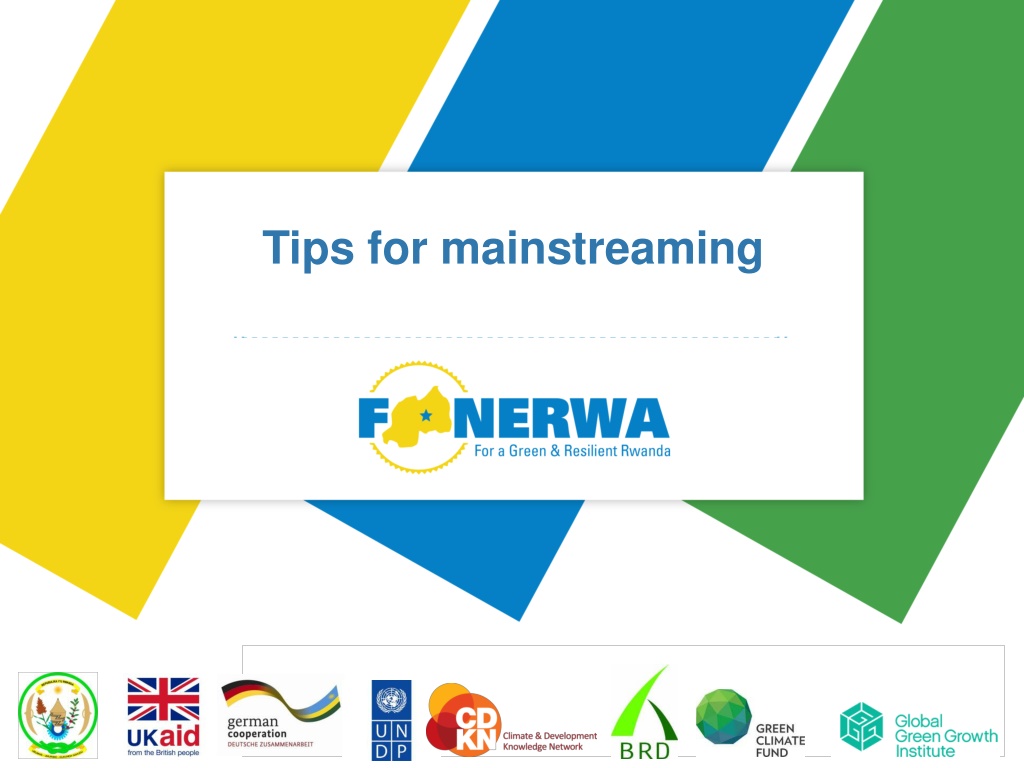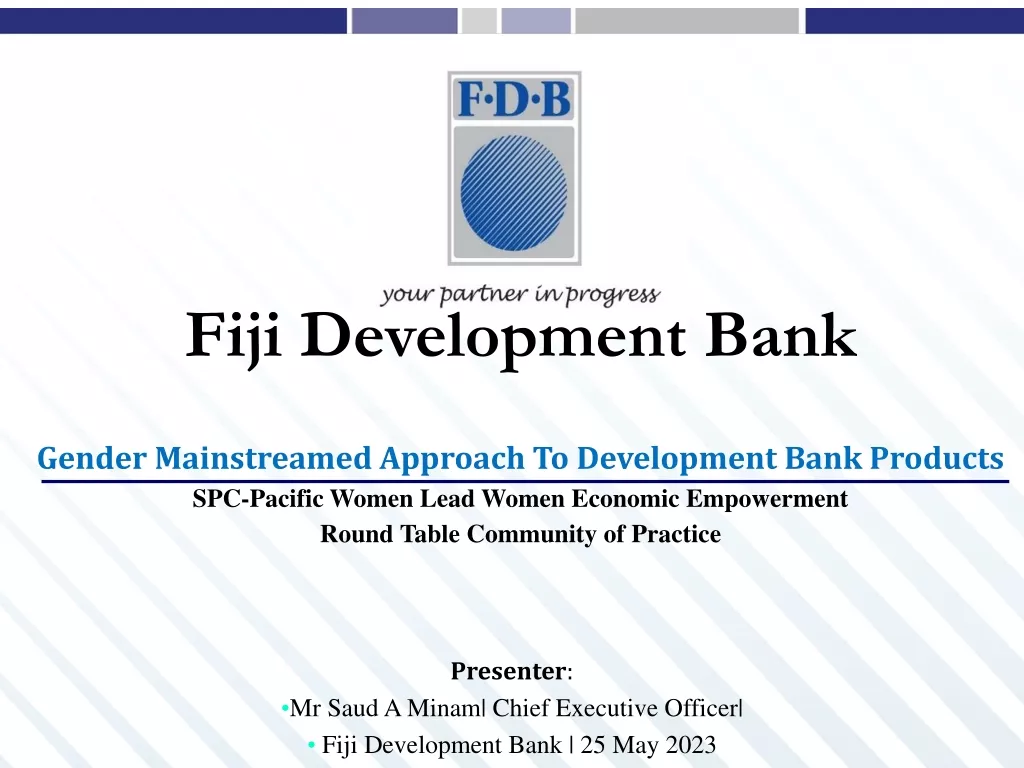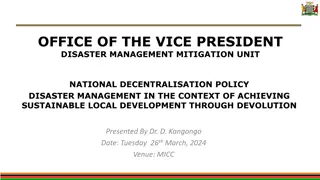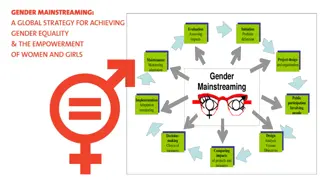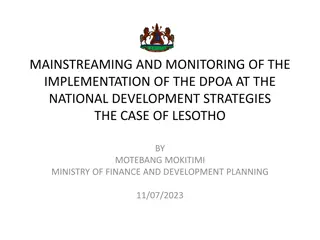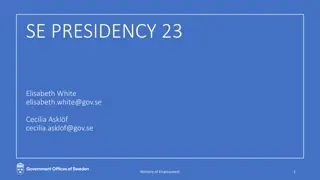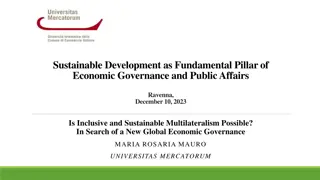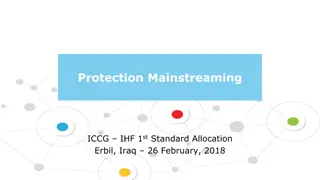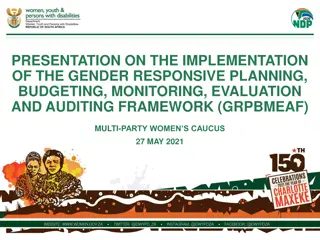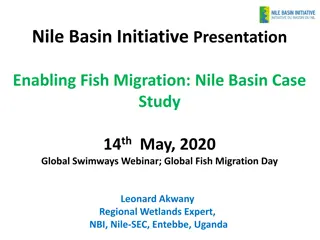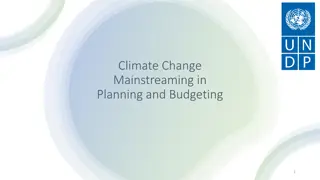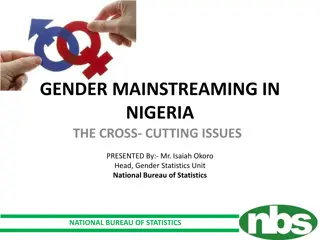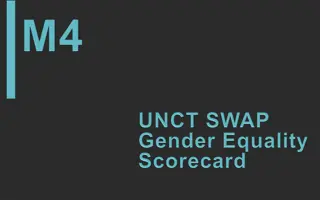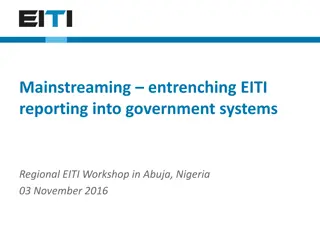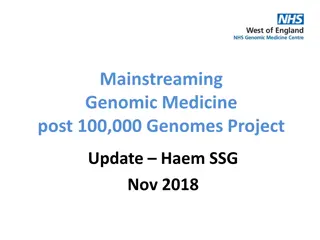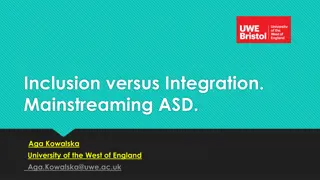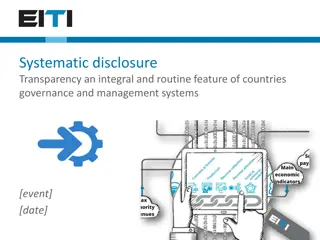Understanding Mainstreaming: Integration for Sustainable Development
Mainstreaming involves integrating environment and climate concerns into policies, plans, and programs to achieve a balance between environmental, economic, and social objectives. By mainstreaming climate resilience and low-carbon development pathways, we can work towards environmentally sustainable and climate-resilient development. Key steps in mainstreaming include identifying entry points, assessing risks and opportunities, engaging early in the development cycle, and evaluating interventions to enhance impact.
Download Presentation

Please find below an Image/Link to download the presentation.
The content on the website is provided AS IS for your information and personal use only. It may not be sold, licensed, or shared on other websites without obtaining consent from the author. Download presentation by click this link. If you encounter any issues during the download, it is possible that the publisher has removed the file from their server.
E N D
Presentation Transcript
What is mainstreaming? The systematic integration of environment and climate concerns in policies, plans and programmes in order to balance environmental, economic and social objectives and contribute to environmentally sustainable, climate resilient and low carbon development pathways. A mainstreaming project goes beyond BAU to build and integrate climate resilience, strengthen low carbon development pathways, or strengthen environmental sustainability
What is mainstreaming? In the past, climate and environment aspects were typically implemented as individual stand-alone projects, and often implemented by Environment (MINRENA/REMA) Mainstreaming is the integration of climate and environment into existing policy and development, i.e. in existing strategy, policy and programme As an example, rather than doing a climate change project on coffee, mainstream climate change in coffee policy and strategy, planning and implementation activities, extension services, to make these climate smart Mainstreaming is therefore undertaken by the relevant Ministries, e.g. MINAGRI, within the existing institutional landscape. A mainstreaming project goes beyond BAU to build climate resilience or strengthen low carbon development pathways
Links between climate change, environment and sector development and benefits of mainstreaming 4
What are the steps in mainstreaming? Risks & Opportunities Urgent activities Entry point Review Identify the entry point for mainstreaming. In Rwanda, the starting point is usually the sector development plan or investment plan. E.g. in MINAGRI, ASIP2 and programmatic area policies and strategies Assess the risks and opportunities with current plans, i.e. what are the climate and environment risks today and under future climate change Review to see if existing activities are already underway to address these, and identify gaps and priorities. Identify if urgent activities / opportunities E.g. tea expansion plans to double hectares under production and will change land- use plans for decades. Need to consider where to plant today so also suitable in future.
What else is important? Understand the policy and institutional landscape Engage early in the development cycle Build awareness to strengthen buy in Look for opportunities to leverage on existing budgets and investment Strengthen the evidence base for mainstreaming Include provision for capacity development to enhance mainstreaming Assess and evaluate mainstreaming interventions to understand if the actions being undertaken are making a difference
Mainstreaming activities Mainstreaming may seem quite challenging. Try small-scale pilots or look at manageable activities. Use building blocks for actions 1. Start with the current risks of the weather and extremes (droughts, floods) and see if there are any immediate actions that address these current risks of weather, e.g. increasing mulching, shade trees 2. Identify near-term activities that have a long life time, such as new infrastructure now or changing land-use. Address risks in design, e.g. hydro 3. Identify major future climate risks and start planning, research or monitoring, e.g. for risks of changing coffee pests, scale up pest monitoring and research on resistant varieties.
Some tips for PD development Ask yourself Is this a mainstreaming project? What key climate/environmental concepts/ approaches/practices are being mainstreamed? Have you analysed the environment and/or climate change context and risks? How will environment and/or climate concerns be mainstreamed into key practices, programmes, plans and policies? What is the entry point? What will be the reach or the extent of mainstreaming activities? ie mainstreaming at the policy/ programmatic/ sector or sub-sector wide/ or pactice mainstreaming? What s the evidence base to support mainstreaming? Does it need to be strengthened? Are there existing initiatives that can be built on? How will the project change the way things are currently done, how will you achieve buy in to the mainstreaming process? Who will are the key stakeholders in the mainstreaming process? Is your organisation best placed to lead mainstreaming or do you need to develop a strategic partnership at the sector level to deliver effective mainstreaming? Is there a need to build capacity to strengthen mainstreaming? How will you track and measure the degree of success achieved in mainstreaming so you can say with confidence that the measures you are advocating have been mainstreamed and there has been a shift away from BAU? 8
Contact us for more information Bright Ntare, Program Manager Rwanda Environment and Climate Change Fund (FONERWA) E-mail: b.ntare@fonerwa.org Mobile: 0788 353486 Tel: +250 252 580 769 KG7 Avenue, Inyota House, Kacyiru, Gasabo DistrictP.O. Box 7436 Kigali Rwanda 9
